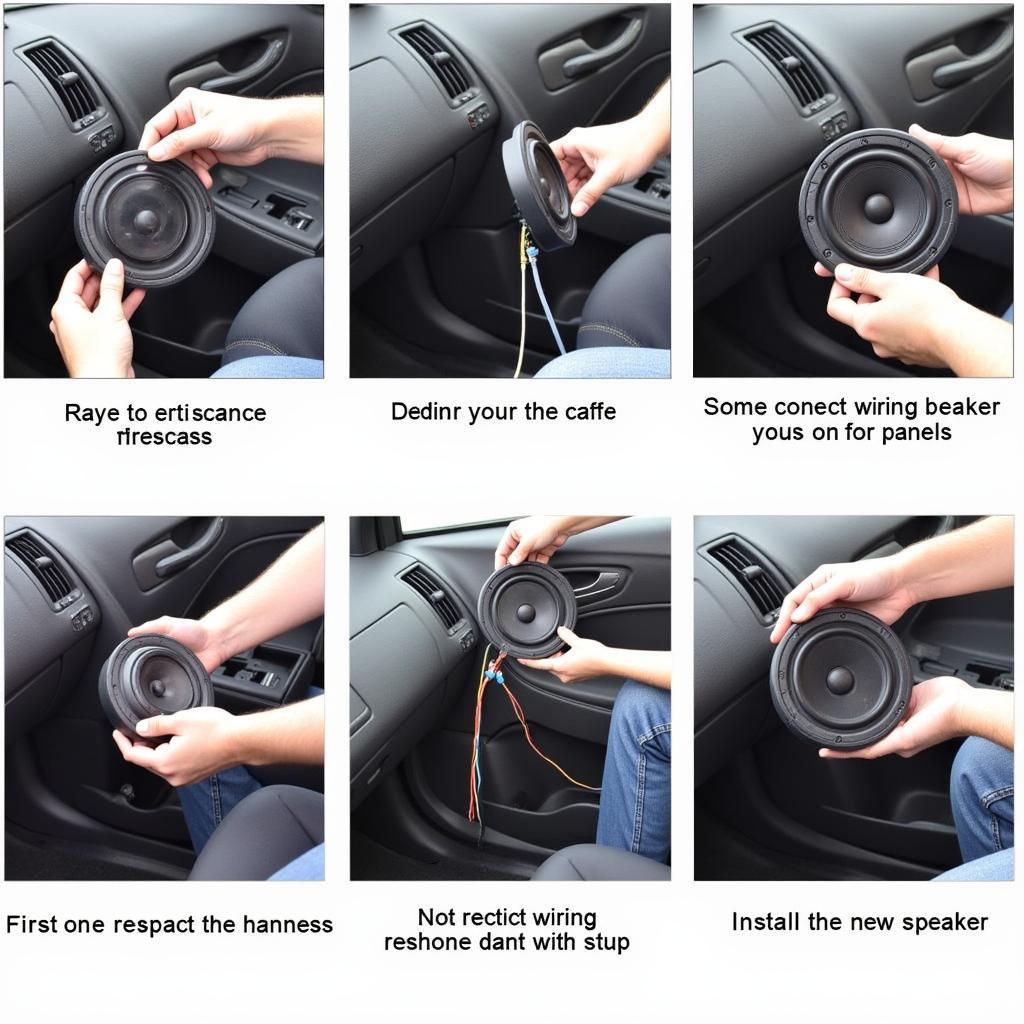A short circuit in your car radio can cause a variety of problems, from a complete lack of power to a distorted or intermittent sound. While this issue might seem daunting, fixing a short in your car radio is often a straightforward process that can be done with basic tools and knowledge. In this guide, we will walk you through the steps to diagnose and resolve this common automotive electrical issue.
Understanding the Causes of a Car Radio Short
Before diving into the fix, let’s first understand what causes a short circuit in your car radio. A short occurs when electricity flows through an unintended path, often due to a damaged wire or a loose connection.
Common culprits include:
- Damaged or frayed wiring: Wear and tear on the wiring harness, especially in areas exposed to heat, moisture, or vibrations, can lead to exposed wires.
- Loose connections: Over time, connections can become loose, creating resistance and potential short circuits.
- Corrosion: Exposure to moisture or salt can cause corrosion on connectors and wiring, leading to shorts.
- Foreign objects: A stray piece of metal or debris can bridge the gap between two wires, causing a short.
How to Diagnose a Short in Your Car Radio
Identifying the source of the short is the first step in resolving the issue.
Here’s a step-by-step approach to diagnosing a short in your car radio:
- Inspect the Wiring: Start by visually inspecting the wiring harness connecting your car radio to the dashboard. Look for any signs of damage, fraying, or corrosion.
- Check Connections: Carefully examine all the connections in the radio and its wiring harness. Look for loose or corroded connectors.
- Use a Test Light: A test light can help you identify a short circuit. Connect the test light’s positive probe to the radio’s positive power wire and the negative probe to a good ground point. If the test light illuminates, it indicates a short circuit.
- Isolate the Problem: Once you’ve identified a faulty section of wiring, isolate the affected portion by disconnecting it from the radio and tracing the path of the wire back to its source.
- Test for Continuity: Use a multimeter to test for continuity in the wiring. If the multimeter reads zero ohms, this indicates a short circuit.
Fixing a Short in Your Car Radio
Once you’ve identified the short circuit, it’s time to repair it.
Here’s what you need to do:
- Replace Damaged Wiring: If you find damaged or frayed wiring, you will need to replace the affected section. This can involve splicing in a new piece of wire or replacing the entire wiring harness.
- Clean Connections: Clean corroded connectors with a contact cleaner or a wire brush. Reconnect the connectors securely.
- Secure Loose Connections: If the connections are loose, tighten the screws or use a small amount of electrical tape to secure the connection.
- Remove Foreign Objects: If you find a foreign object causing a short, carefully remove it.
Important Safety Tips:
- Always disconnect the battery before working on any electrical components in your car.
- When working with electricity, use caution and wear protective gear.
- If you are not comfortable working on electrical components, it is best to take your car to a qualified mechanic.
Troubleshooting Tips for Specific Problems
Radio Not Turning On: If your car radio doesn’t turn on at all, the problem might be a blown fuse. Check the fuse box in your car and replace any blown fuses.
Radio Sounding Distorted: Distorted sound could be caused by a loose connection or a faulty speaker. Inspect the speaker wires for damage and make sure the speaker connectors are securely connected.
Radio Intermittently Turning Off: If your car radio turns off and on randomly, it might be caused by a loose connection or a short circuit in the power supply.
Expert Insights
“If you’re unsure about any part of the repair process, it’s always best to consult a professional automotive technician,” advises John Smith, a certified automotive mechanic with over 20 years of experience. “They can help you identify the root cause of the short and ensure the repair is done safely and correctly.”
Conclusion
Fixing a short in a car radio might sound intimidating, but it’s often a simple fix. By following these steps, you can effectively diagnose and resolve this common automotive electrical issue. Remember to prioritize safety and consult a professional if you encounter any difficulties.
If you need further assistance or have any other car maintenance questions, feel free to reach out to AutoTipPro at +1 (641) 206-8880 or visit our office at 500 N St Mary’s St, San Antonio, TX 78205, United States.
FAQ
Q: What if I can’t find the short circuit?
A: If you’re unable to locate the short, consider consulting a professional mechanic. They have specialized equipment and expertise to diagnose and repair electrical issues.
Q: What if I replace the wiring but the short persists?
A: If the short persists after replacing the wiring, there may be a short in the car radio itself. You may need to replace the radio or have it professionally repaired.
Q: Is it safe to use electrical tape to repair the wiring?
A: Electrical tape can be used as a temporary solution to secure a loose connection, but it’s not a permanent fix. For long-term solutions, consider splicing in a new piece of wire or replacing the entire wiring harness.
Q: Can I use any type of wire to replace the damaged wire?
A: It’s crucial to use wire that’s rated for the appropriate amperage and voltage to avoid further damage or safety risks.
Q: How often should I inspect my car radio wiring?
A: Regular inspections are recommended, especially if your car is frequently exposed to harsh environments like extreme temperatures or moisture.






Leave a Reply